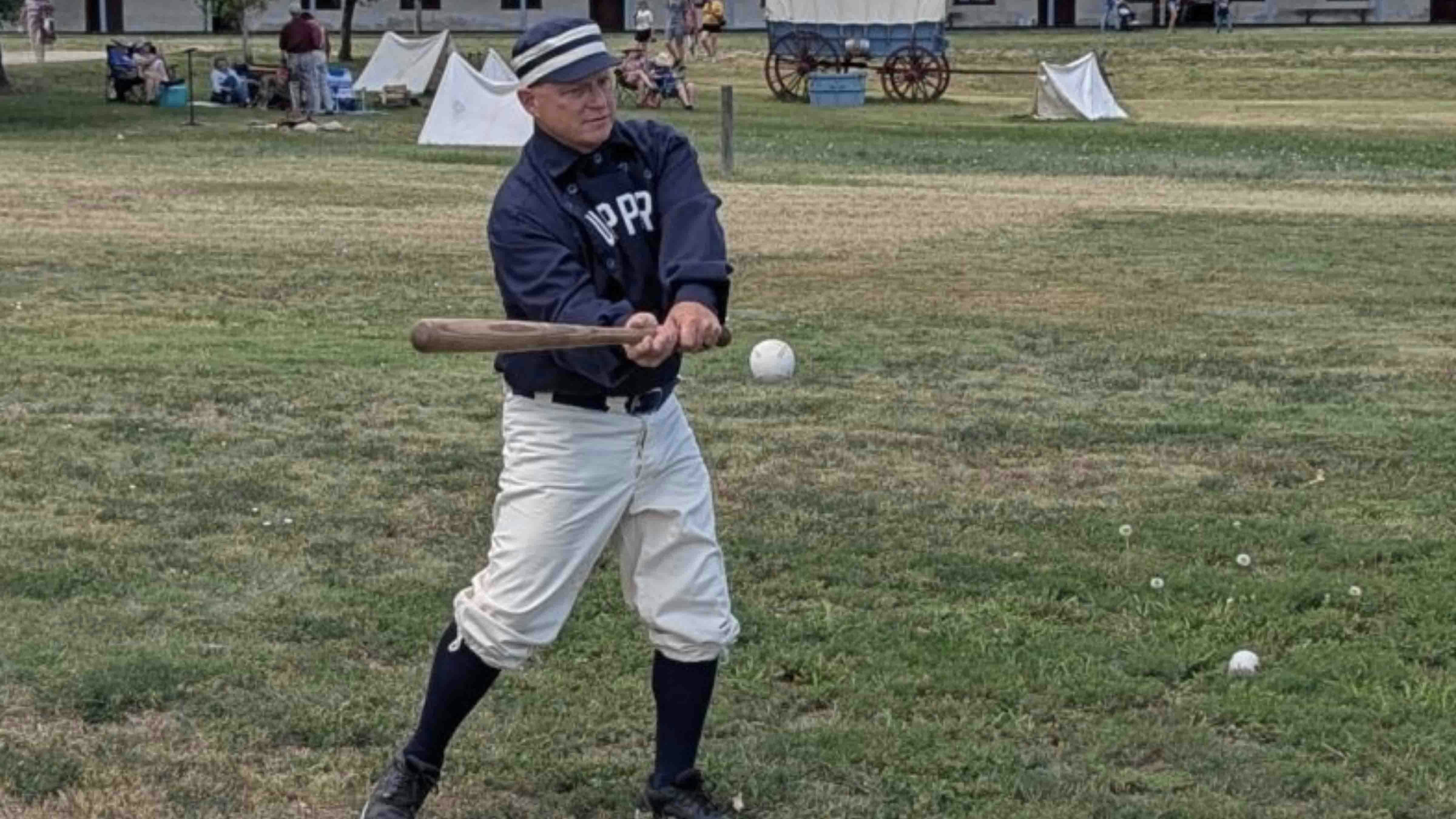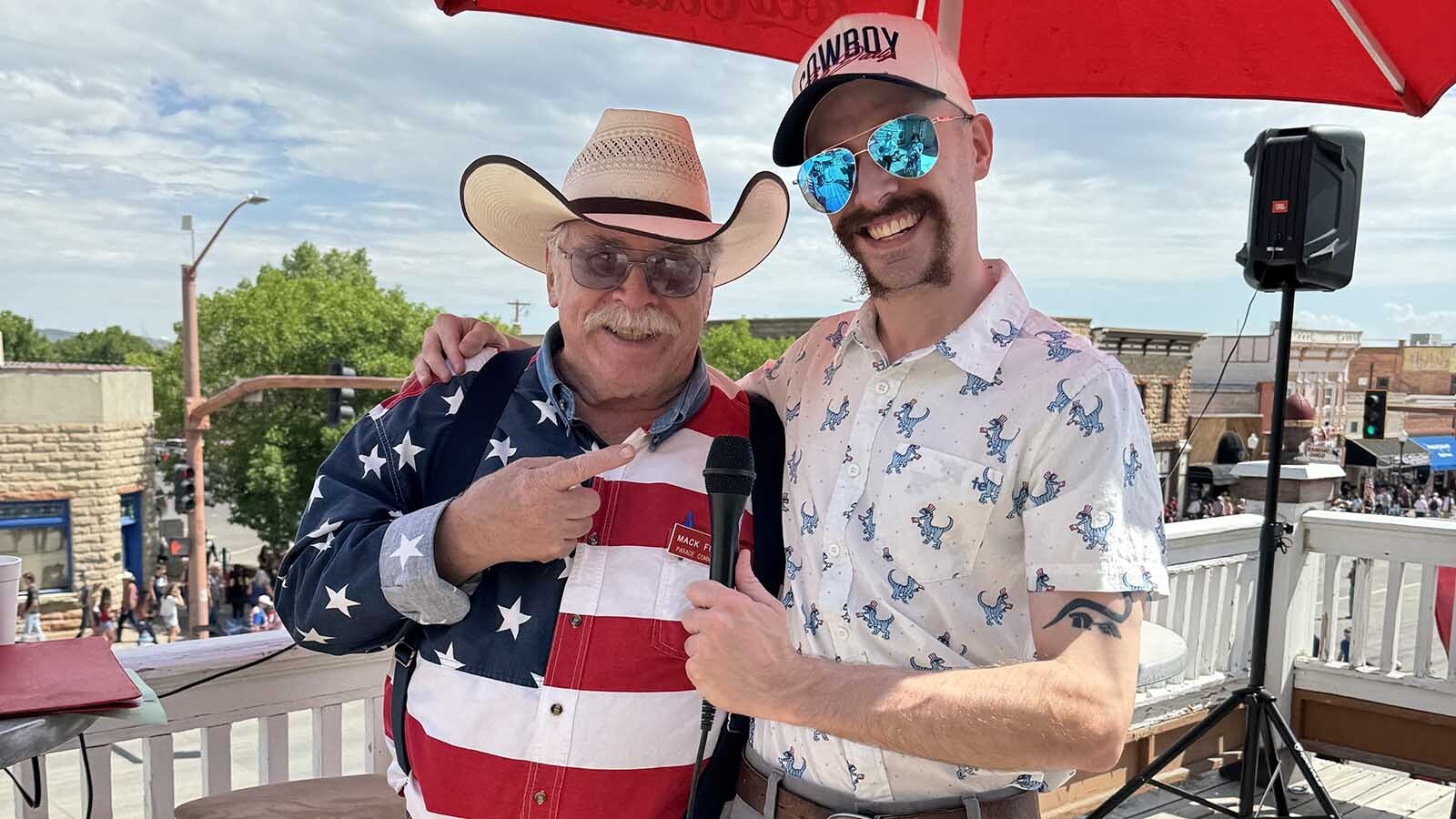By Ike Fredregill, Cowboy State Daily
Fifty years after the Black 14 were expelled from the University of Wyoming varsity football team, a Black 14 member said racism and ignorance still boils under Wyoming’s skin.
As a football player and UW student, Mel Hamilton, 72, was one of 14 men kicked off the UW football team in 1969 for wearing black armbands to protest the Church of Latter Day Saints’ policy of prohibiting black men from entering its priesthood.
As Wyoming’s first black high school principal, Hamilton said he watched widespread racism persist right up until 2014, when he retired.
“It’s a shame to say, but it’s pretty much the same as when I entered Wyoming in 1965,” he said, adding, “with one exception — it went underground.”
When Hamilton first arrived in Wyoming, racism was out in the open, but nowadays, he said it’s hidden in policies, inherent beliefs and mentioned only behind closed doors.
“It’s so obvious to us people of color,” Hamilton said. “And you have to laugh to keep from crying.”
Troubling history
Invited by UW, Hamilton traveled to Wyoming in hopes of pursuing a degree in physical education, paid for by a football scholarship.
“I remember when I was recruited in 1965, they took the bus to the bus depot,” he said. “I wasn’t sure if the coaches were picking us up, so I waited for about 45 minutes, then decided to go looking for campus. I must have asked five people and none of them took the time to point out the direction of the university.”
The reaction was disappointing, but not surprising. A South Carolina native raised in North Carolina, Hamilton was well acquainted with racism. But Wyoming was a long way from the Mason-Dixon line, and he said he wasn’t expecting such behavior out West.
“I guess it was no different than any town in America at that time,” Hamilton said. “You’re OK as a black person in any town in America as long as those citizens view you as calm, rational and acting the way black people ought to act.”
Hamilton kept his head down and tried not to attract attention. Something as simple as shopping for groceries, however, was a reminder of his position as a black guest in predominately white state.
“In Laramie, you couldn’t go to certain bars — not that you’d want to even if you could — and you have the constant staring at blacks when they go into any kind of store,” Hamilton recalled. “People followed us around the store and constantly harassed us with disapproving looks.”
Not everyone felt the same, though. Frequently, Glenn “Red” Jacoby, UW’s athletic director at the time, invited Hamilton to dinner at Jacoby’s home.
“That comforted me a lot,” Hamilton said.
But he said it wasn’t enough to make up for the blatant racism of Lloyd Eaton, UW’s head football coach from 1962-1970.
“The worst behavior I encountered was when Lloyd Eaton told me I couldn’t marry my fiancé, who was white,” Hamilton said. “It made me so mad I decided to join up and go to Vietnam — I volunteered.”
After two years in the U.S. Army as a radio operator guarding nuclear weapons in Turkey, Hamilton returned to UW to finish his degree, continue playing football and marry his fiancé. It was during this second attempt at being a black football player on Eaton’s team Hamilton became a member of the Black 14.
Football players weren’t the only students to experience racism in Wyoming’s schools. Wyoming’s first black Republican to serve in the Wyoming House of Representatives and Senate, Sen. Lynn Hutchings, R-Cheyenne, said the color of her skin also played a role in how she was treated in primary and secondary school.
“I attribute that mostly to the ignorance of children, though,” Hutchings, 58, added.
Present day racism
The Equality State might not have the tumultuous history of race relations of its easterly siblings, but its record is not a clean slate.
In 1995, former-Gov. Jim Geringer denounced the Ku Klux Klan, but honored their right to free speech and peaceful assembly on the Capitol steps.
Former Associated Press Correspondent Jim Angell, now managing editor of the Cowboy State Daily, said he covered the event.
“There was about a dozen of them, and they struck a defiant pose on the steps,” Angell remembered. “Throughout the day, more than a hundred counter-protestors came by — most out of curiosity, I think.”
In 2003, The World Church of the Creator, renamed the Creativity Movement and classified as a neo-Nazi group by the Southern Poverty Law Center, declared Riverton as its headquarters.
National Public Radio reported the declaration was not received well by Riverton residents and the local Chamber of Commerce hosted workshops on diversity.
In 2015, Roy Clyde, a Riverton Parks and Recreation Department Employee at the time, shot two sleeping Native Americans, killing one and wounding the other, in a Riverton detox center. Clyde told investigators he was targeting homeless people, denying race played a role in the violence.
In 2018, an American flag flying in a Laramie public park was replaced with the flag of Nazi Germany. In January, Identity Evropa, designated a hate group by the Anti-Defamation League and Southern Poverty Law Center, posted photos on Twitter of members holding banners with anti-immigration slogans outside the Wyoming Supreme Court and Cheyenne Depot Plaza.
With about 93 percent of residents identifying solely as white, Wyoming has one of the most predominately white populations in the nation, the U.S. Census Bureau reported. Maine ranks highest with about 95 percent of its residents identifying solely as white. Nationally, about 77 percent of people identify solely as white, the bureau estimated in 2018. Wyoming’s lack of diversity and rural setting could explain why racism remains rooted in its communities, Hamilton said.
After graduating from UW, he moved his family to North Carolina, but Hamilton said the South didn’t agree with his wife. They returned to Wyoming in 1974. While pursuing his masters degree, Hamilton worked on nearby oil rigs.
“I remember when I worked in the oil field in between my education career,” Hamilton said, “I went on the deck of a rig one day, and the driller was so shocked I was black. He said, ‘Who the hellare you?’ I said, ‘I’m Mel Hamilton, who the f—-are you?’ That’s how I kept peace with myself. Thank god, that perception did not happen more than 3-4 times a year.”
As a principal at East Junior High School in Casper, then at Casper’s Roosevelt High School, he said he experienced more of the same.
“Some of my colleagues asked, ‘What is racism? How do you identify racism?,’” Hamilton recalled. “You get tired of hearing these questions after a while. If they don’t realize there is racism, should I paint them as racist or just ignorant of diversity?”
Racism may have been prevalent in Hamilton’s life, but Hutchings said after high school, she didn’t run into it much until recently.
After meeting with Cheyenne Central High School students early in February, Hutchings was accused of comparing homosexuality to beastiality, which she denied.
“Since then, I’ve been called the n-word, the b-word, the c-word — all of it,” Hutchings said. “My email is full of hate every morning, and it’s all coming from the people asking the most for tolerance.”
Her fellow legislators, however, have been supportive throughout her time in Legislature, and she said they’ve never expressed racist sentiments.
A brighter, diverse future
Wyoming may still struggle with diversity, but Hamilton said it’s a far cry from the malevolent racial tensions prevalent in the South.
“Despite all the things I’ve said, Wyoming is probably the most relaxing place I’ve been,” he explained. “It was tough raising my children (in Wyoming) who are bi-racial, but I never feared being lynched or drug behind a truck until I was dead.”
Returning to South Carolina after retiring, Hamilton stays in touch with educators in Wyoming, and they frequently mention race-related problems present in today’s schools.
But, he said it doesn’t have to remain that way.
“You must tell kids the truth about race,” he explained. “Those kids are intelligent and open to any conversation about race. They are not the ones holding back race relations in Wyoming. They are in the forefront of racial change in Wyoming.”
Adding diversity to the history books and teaching students how minorities contributed to growth of the U.S. as well as informing them how racism was cultivated by ignorance would be a strong step toward improving Wyoming’s future race relations, Hamilton said.
“They must be allowed to learn what other races have given this country,” he said. “They are ready to lead the way if we — the old vanguard — just get out of the way and let them do it.”





